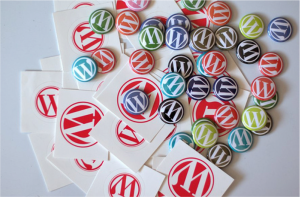When it comes to e-commerce and retail, artificial intelligence (AI) can turn an online shopping experience into something incredible that makes buyers more loyal to the platform. Think about the last time you bought something online. Was the website awkward to navigate? Were you able to search for what you were looking to buy? If the initial interactive experience with an online shopping platform is frustrating, you are probably not likely to return. In fact, chances are, you will quickly seek out another website that is easier to search and maneuver leaving the interactively challenging site in the dust far behind.
When images of items that website users are looking to buy are properly annotated and categorized, a user logs on to see and search all of the products they are wanting to buy. Sometimes, they see items that are suggested to them based on their searches that make them buy additional items they may not have even known they needed when they logged on. The way this happens is through computer vision based technology that helps machines recognize different types of objects. A skilled team of experts who know how to label, tag, and classify object images properly make all this happen with image annotation services.
The bottom line is that when a customer has a pleasant shopping experience, they are more likely to return. When it comes to e-commerce and retail, artificial intelligence can turn a shopping experience into a convenient session that makes buyers want to repurchase whether online or in-store. Image annotation for e-commerce works similarly to image annotation for retail but each have their own specific goals.
Image Annotation for E-commerce
Annotating images online and tagging with specific captions and keywords to make it easier to classify products give online shoppers a better user experience by giving them exactly what they’re looking to buy. A well-done image annotation process will ensure that products are categorized accurately. Tagging images properly helps to improve the search relevance to make relevant recommendations on site.
Additionally, visual search has proven to be useful when it comes to finding a specific product on an e-commerce platform. If you forgot what a product is called or if you found a product, saved the image and are on your way to purchasing it on a website, you can conveniently upload or simply drag the photo to the search bar to find the product you are looking for.
Business owners benefit so much when they tap into the power that an image annotation outsourcing service can provide for them. These skilled annotators accurately label and classify these objects for an AI-backed interactive e-commerce site to recognize objects and make the product search experience comfortable. This helps customers to select the right product that they are exactly looking to buy. A tagging job well done can often mean the difference between satisfying and retaining customers or being passed over and forgotten.
Image Annotation For Retail
While e-commerce sites have made it convenient to shop, not everything is done online. This doesn’t mean that technology is any less important. Integrating algorithms in machine learning is not easy unless you have the right quality and quantity of training data to create an AI model specifically for retail. Image annotation for retail has many purposes. One way image annotation and image tagging helps offline retailers is when it improves the app’s image search functions or when it is able to improve inventory management to keep store shelves stocked with the products that the customers want.
Experienced image annotation teams annotate images of shelves, prices, brands, and products so companies can track shelf management, identify items that have been misplaced, and quickly conduct price checking. Image annotation is used to detect various pictorial content such as specific features of a product, various objects, or other image elements.
Cashier-less checkouts
Peeking over the horizon in what may be the future of shopping is a fusion of traditional in-store shopping and modern e-commerce. A future without queues and cashiers and change and all the mess of retail while keeping the experience of having the product right in front of you, cashier-less checkouts will be powered all the same with annotation services.
Simply installing a camera above your standard checkout counter conveyor belt coupled with the right software and top quality image data-sets to run object recognition and counting could cut down overhead costs and keep store management on top of any changes or issues.
Teaching computer vision models everything from product labeling and placement to even customer gestures and movements, compiling and combining all this data to make sure shelves stay stocked, items aren’t misplaced, and most importantly for the customer, the check-out counter becomes quick, convenient, and painless.
Digital & Social Articles on Business 2 Community
(50)





